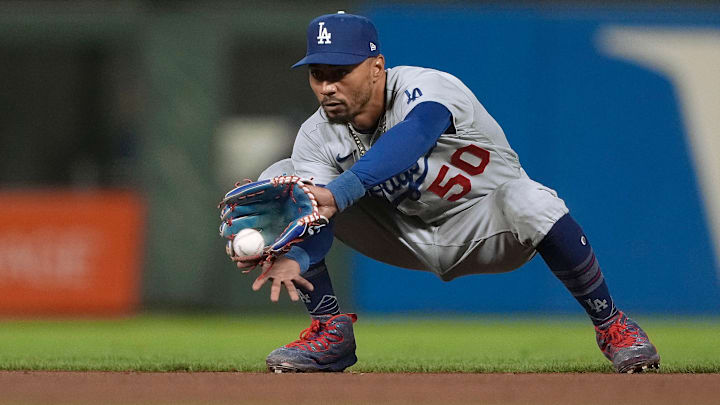Throughout history, players have changed positions for a variety of reasons. Usually age, injuries, ability (more like inability), or simply finding a way to get them more plate appearances are the main factors. There have been many cases that have turned out well, while some players have faltered at their new homes. This is especially pertinent for 2024, as one MVP-level talent prepares to enter largely uncharted territory.
The most radical change that turned out for the best has to begin with Babe Ruth. Ruth was the best left-hander in the American League, but what he was showing with the bat was so much more valuable. In 1918, Ruth led the league in home runs for the first time (the first of many), even though he only played 47 games in the outfield and 13 games at first. 1919 saw that increase, with Ruth leaving the mound for greatness. Goes without saying this is the best change of all time.
What is lesser known is another Red Sox hurler did the same thing that very year. Smoky Joe Wood moved to Cleveland’s outfield, and even though he didn’t have Ruth-type numbers, he still hit respectively. In 1922, he had 92 RBI with a .297 batting average.
Much later in the 2000s, Rick Ankiel made a much-publicized move from the mound to the outfield. He had moderate success and showed off an arm like I’ve never seen before.
Robin Yount was a Gold Glove shortstop for the Brewers who led them to the World Series in an MVP year in 1982. Years later, he made the move to center field and prolonged his career, even getting a second MVP award in 1989.
Going a little back to the '60s, '70s, and '80s, Pete Rose moved all over the place. He played second, third, left field and right field, finally stopping at first base once age caught up with him. He never felt any ill affects to his offensive production throughout his tenure in the bigs.
Two examples of these shifts not working out involve Hall of Fame catchers and age. Johnny Bench moved to third base in 1982. He made 19 errors in half a season at the hot corner. In his final year in 1983, they even tried him at first, but he was done by that point.
Carlton Fisk's case was a bit different. In 1986, the White Sox tried to move him to left field, and boy, he was NOT a fan! When asked what the toughest part of playing left was, Fisk answered, “Staying awake.” He later moved back behind the plate and played until he was 45 in 1993.
Fast forward to this year, and Dodgers’ skipper Dave Roberts has indicated that Mookie Betts will be the team's everyday second baseman. He did move to the middle infield for a time last year, and now the move looks permanent. It's hard to imagine a six-time Gold Glove winner moving in his prime, but Betts isn’t completely unfamiliar with the position, have played last year and coming up as a second baseman with the Red Sox. The Sox already had Dustin Pedroia, which necessitated the move for Betts. This time around, Betts requested the switch.
2024 and beyond will show us many players whose position changes may prolong a career, define a career, or simply be a footnote in one’s career.
